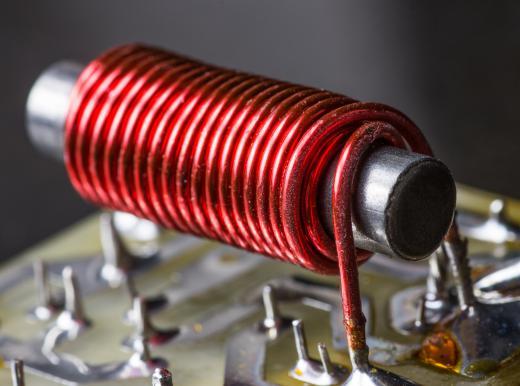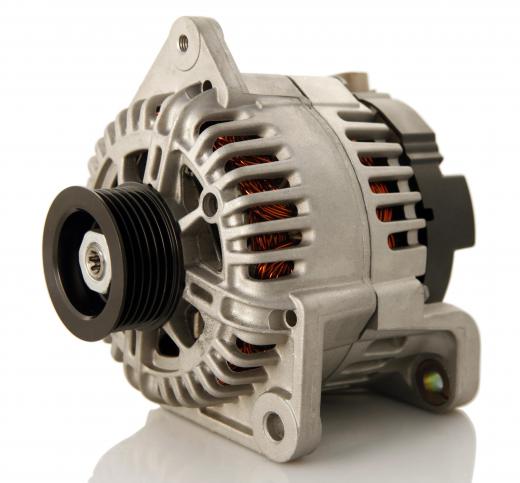The term electromagnetic device refers to any item that is either powered by electromagnetic fields, produces electricity using magnetic fields, or is magnetized by electricity. Devices powered by electromagnetic field are classified as electric motors or solenoids. Electric generators and alternators are electromagnetic devices that produce electricity using magnetic fields. Electromagnets and electromagnetic coils make up the third group of electromagnetic devices.
When referring to an electromagnetic device that is powered by electromagnetic fields, there are two basic branches: the motor and the solenoid. The motor uses electric current to generate magnetic fields within the windings to rotate the motor's shaft on its axis. The solenoid functions in only two directions of movement. When the windings of the solenoid are electrically charged, the shaft moves either in or out of the coil, depending upon the shaft's own magnetic orientation. In some cases, the movement of the shaft may be assisted by a spring.

An interesting example of a solenoid in action is the electromagnetic projectile device. When energized, the coils of this device generate a high magnetic pressure on the magnetized shaft, forcing it out of the coil. The shaft of this electromagnetic device is not tethered and can thus be expelled from the coil at high velocity.
Another application of the solenoid is its use in the operation of timed locking mechanisms for high security areas, such as bank vaults. When these solenoids are receiving power, the shaft remains in the coils. When the timer cuts off power to the coils, a spring pushes the shaft out of the coil and into the locking position.

Another group of electromagnetic devices includes those which create electricity from magnetic currents. The simplest form of alternator or generator is actually an electric motor. Instead of using a battery to power the motor, the shaft is rotated manually. The alternator is distinguishable from the generator only by its moving parts and electrical output. Alternators produce an alternating current (AC) by moving spinning magnets past coils. Generators produces direct current (DC) by rotating wire coils instead of magnets.

A third group of devices which carry the name electromagnet device includes any item that is magnetized by electricity. Thus the wire coils of the electric motor and generator can stand alone under the name of electromagnetic device on their own merit. Other devices which fit into this category are the large electromagnets used in automotive salvage and the electromagnetic coils used in the ignition systems of some automobiles.

In some cases, electromagnetic devices are used as a component of security equipment, such as security alarm sensors. In the case of the security alarm sensor, an electromagnetic device is kept in close contact with a wire coil or a permanent magnet. When the two items are kept within range, the circuit remains open and no alarm sounds. When one of the two items is moved, it generates a change in the electromagnetic field and the circuit closes, tripping the alarm.
